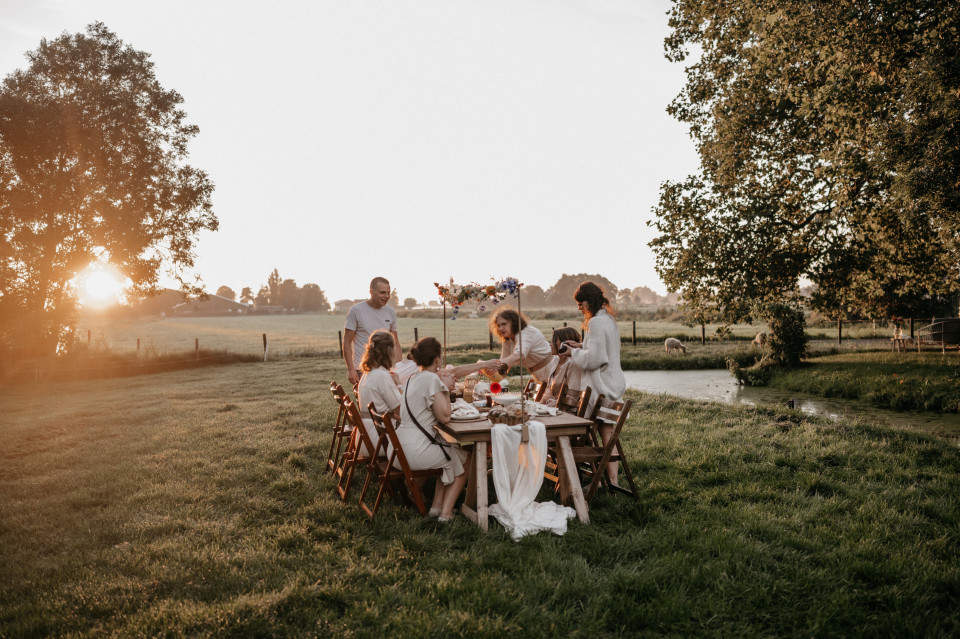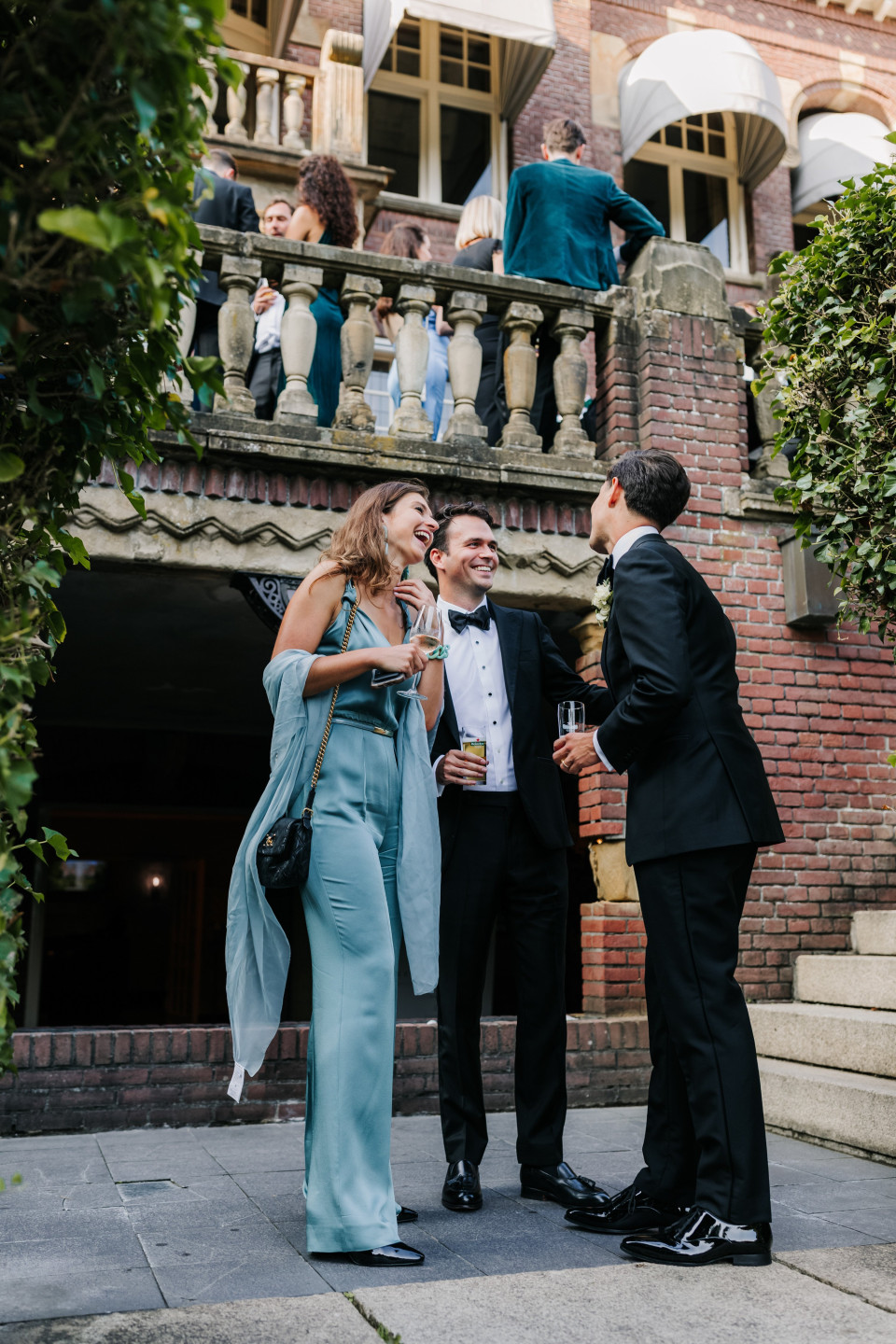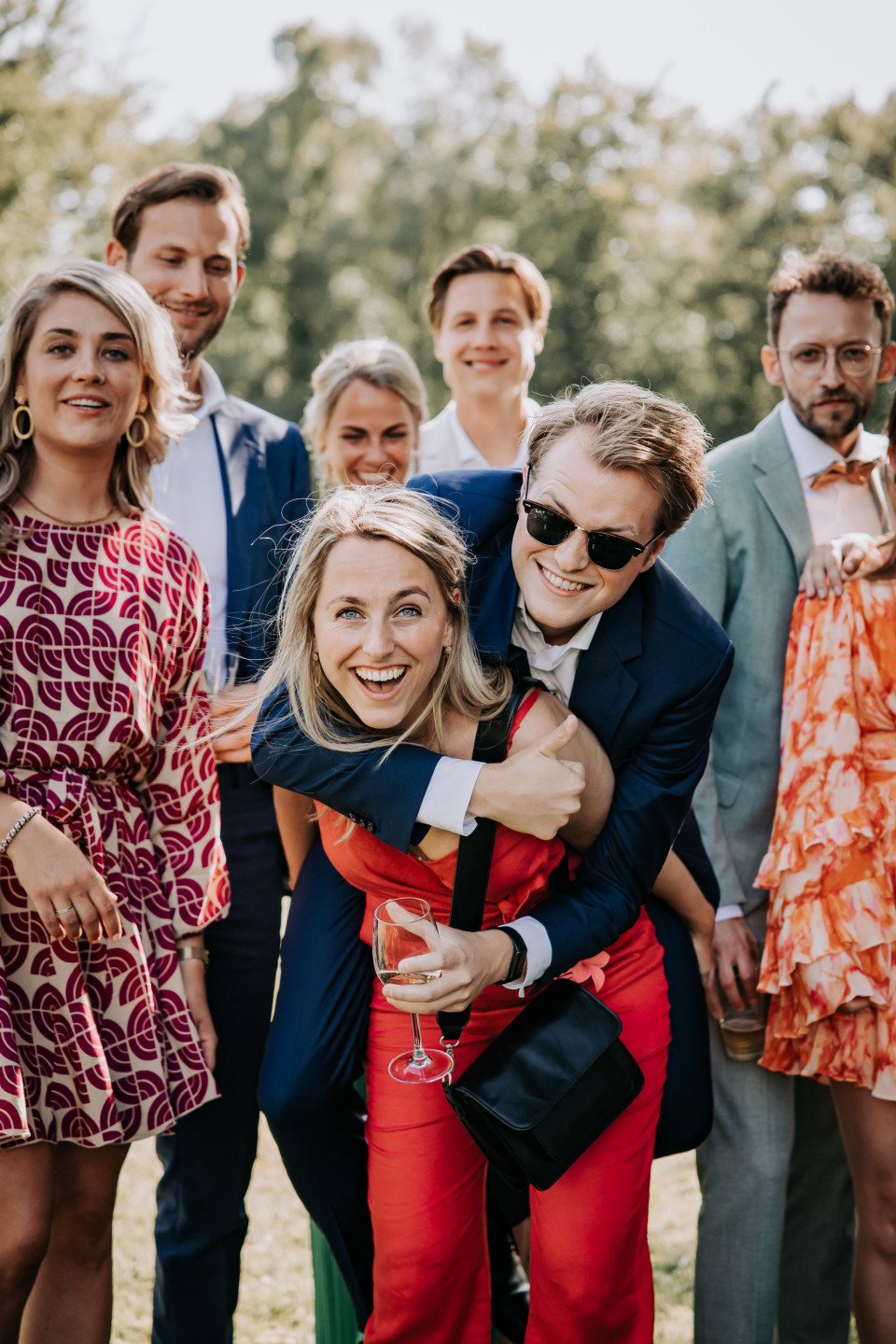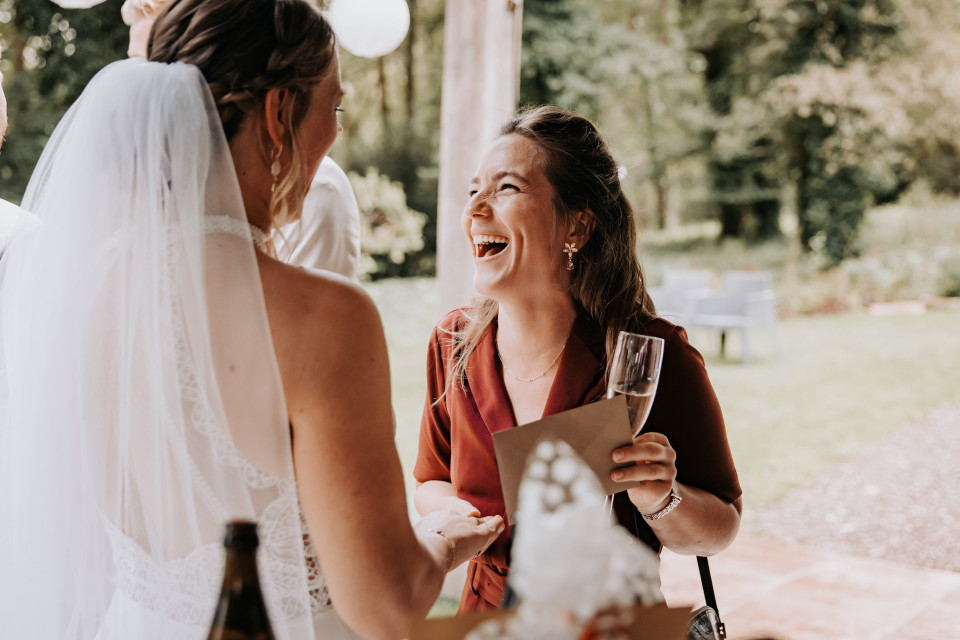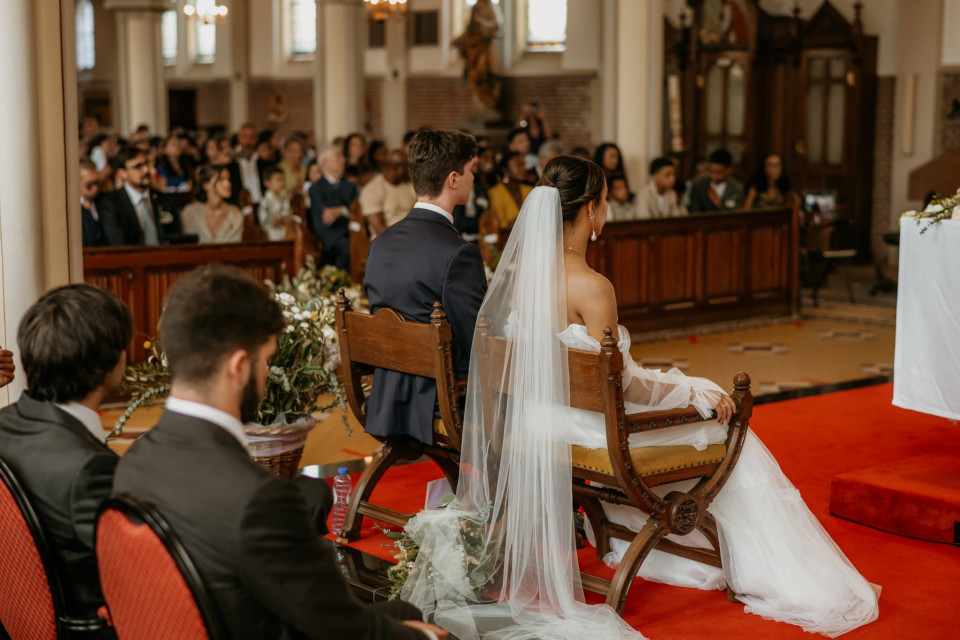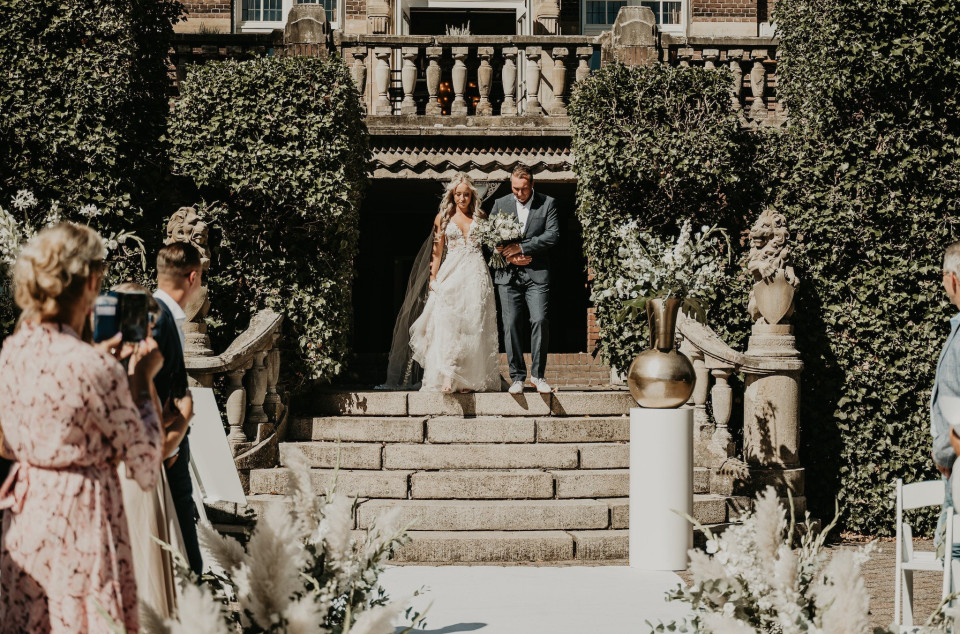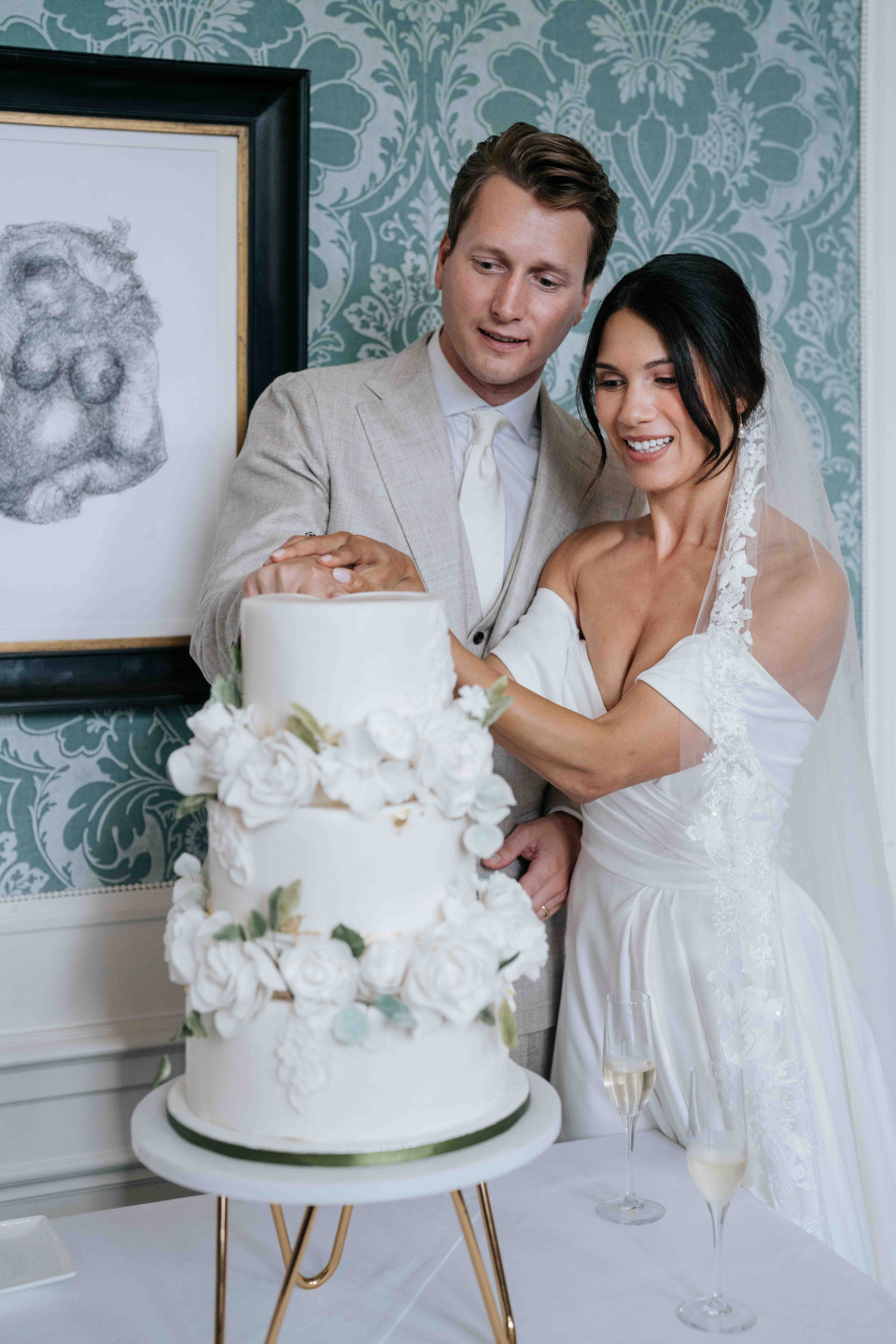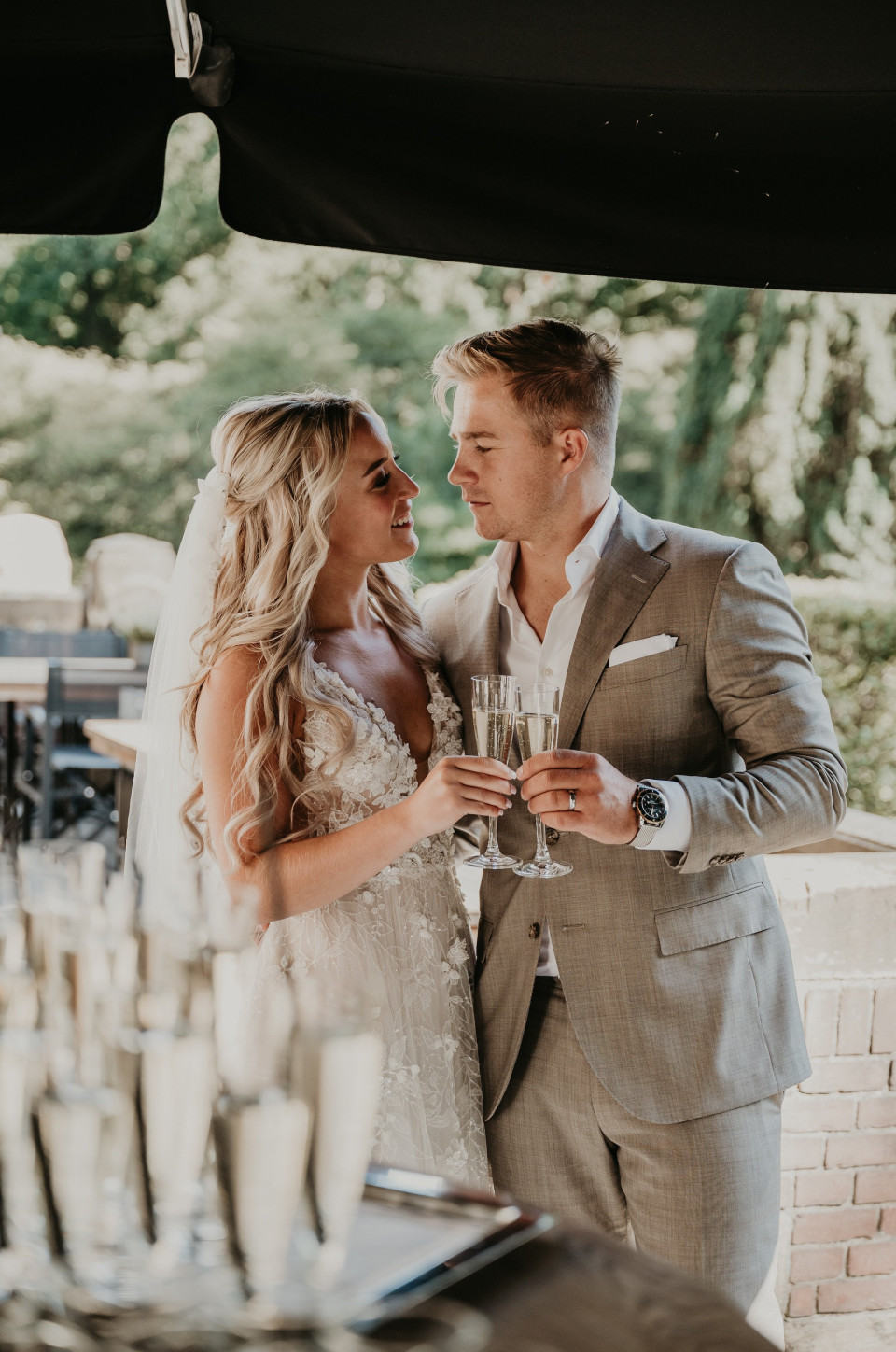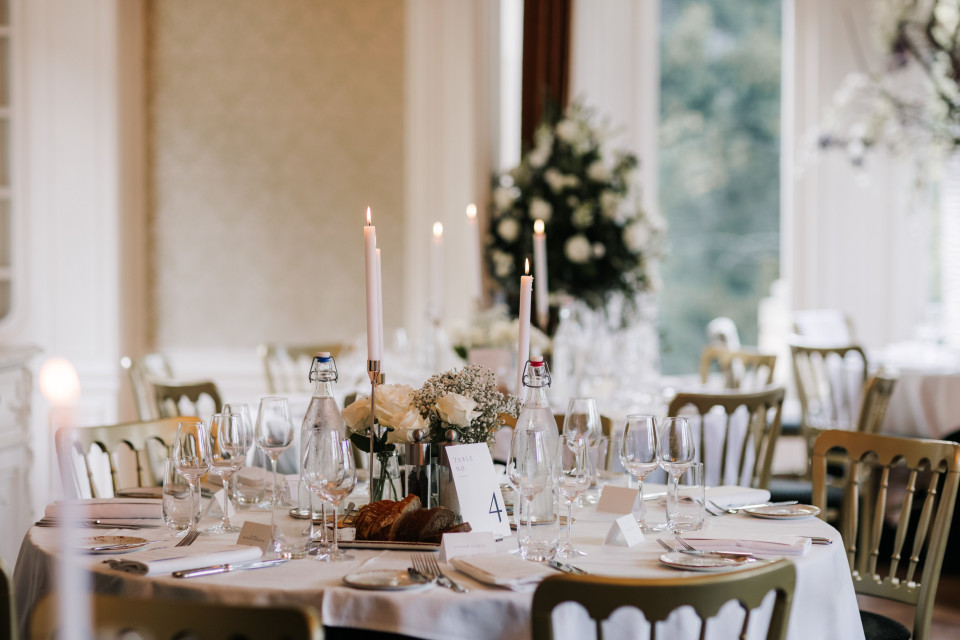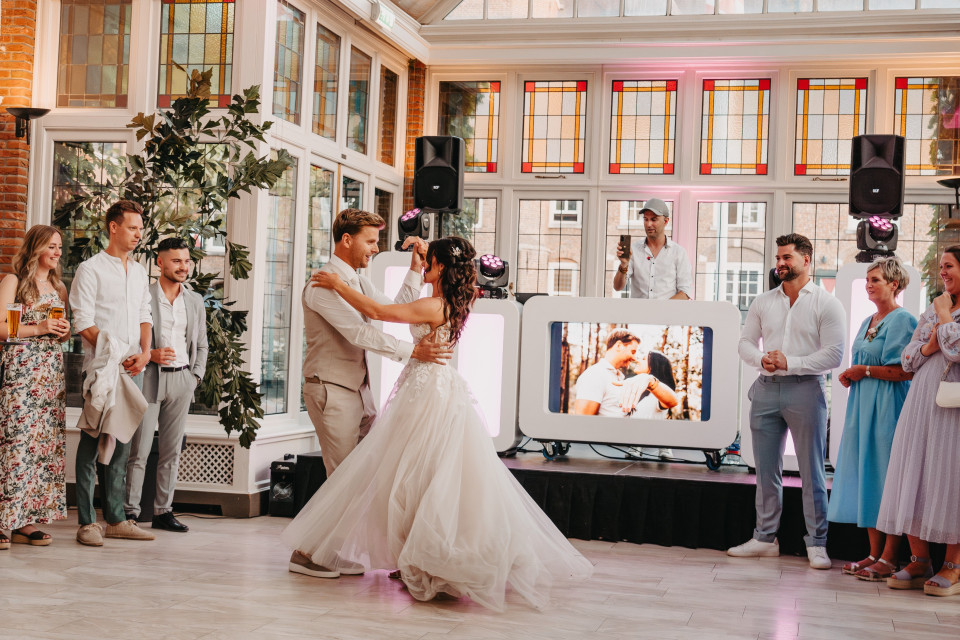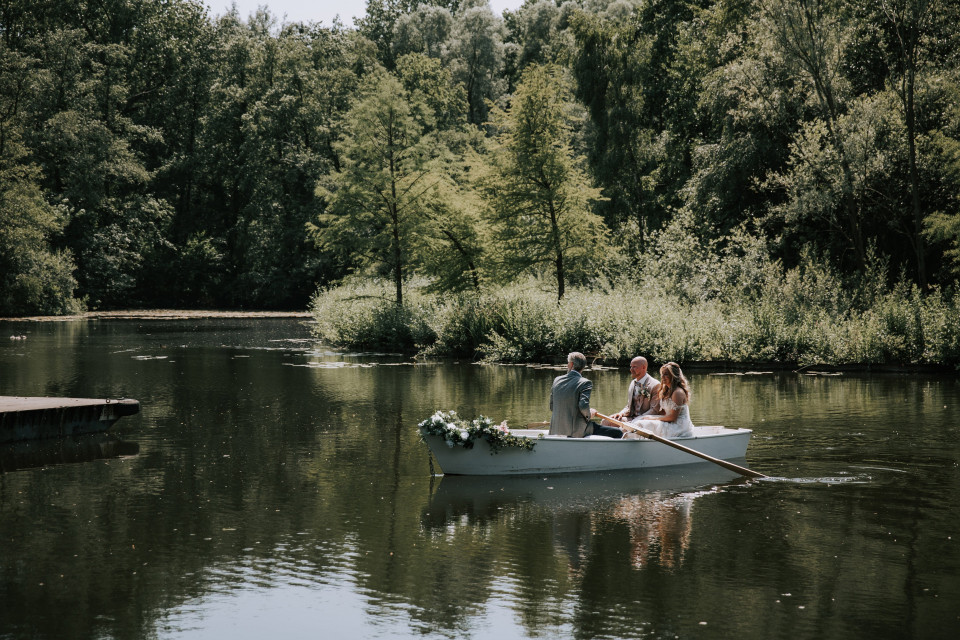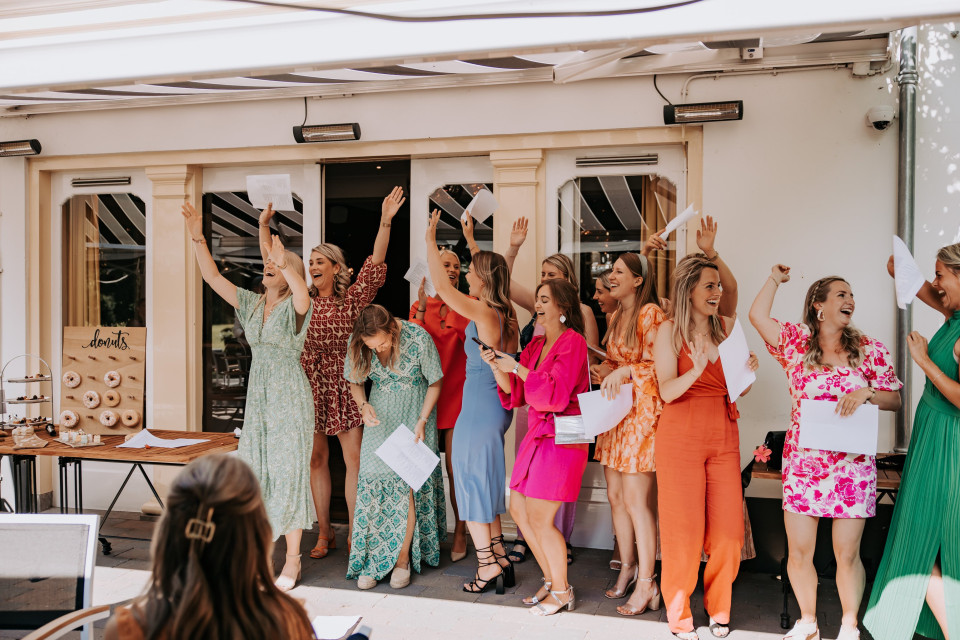Attending a Dutch wedding? This is what to expect!
This is your guide with everything you need to know when you're invited to a Dutch wedding.
door Sarah Glasbergen op 25 oktober 2024
Webredacteur
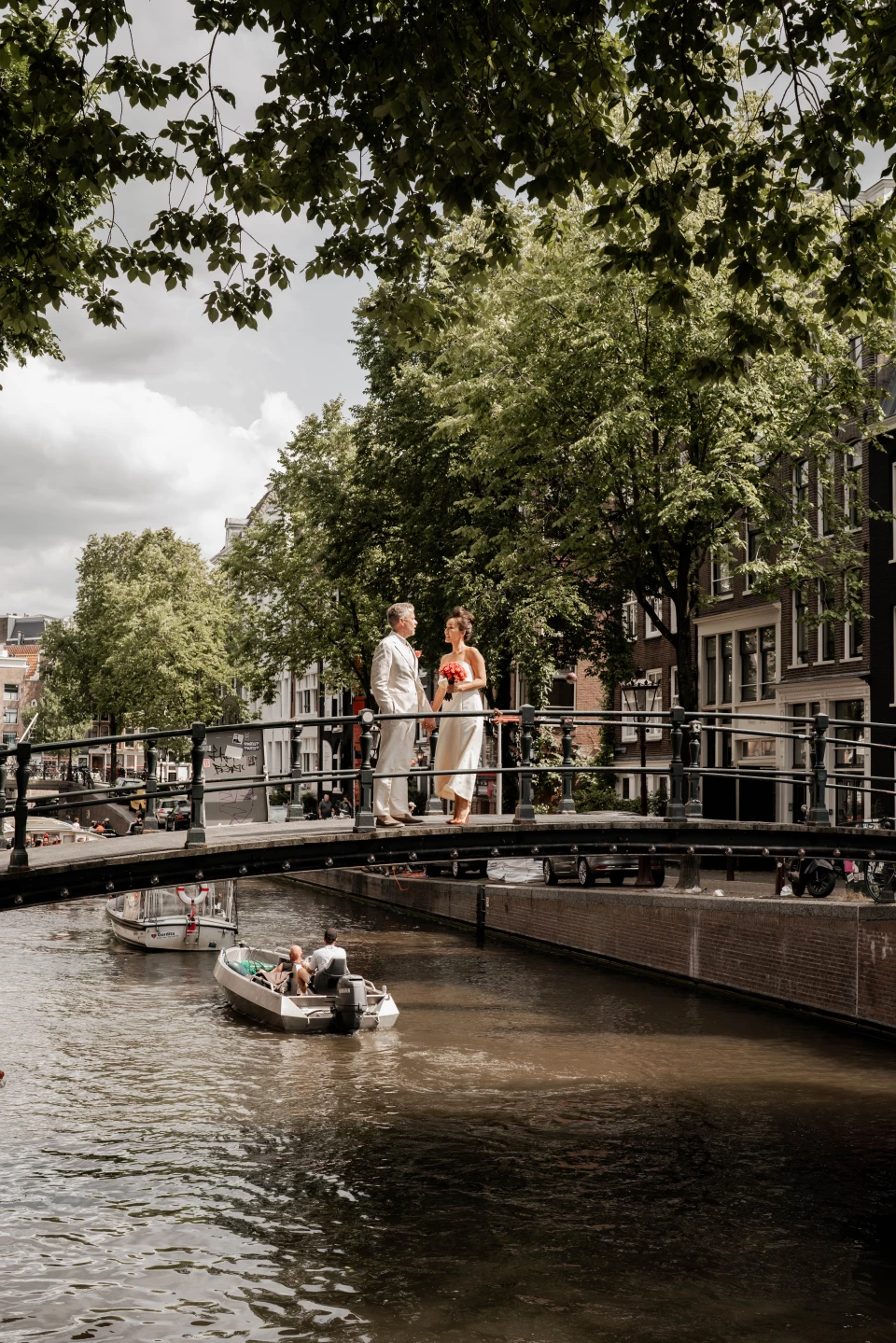
Are you attending a Dutch wedding soon and wondering what to expect? Dutch weddings are a charming mix of traditions, fun, and love, with a few unique twists that might surprise you! Whether you're a close friend, a distant relative, or a colleague, this article will help you to learn all the ins and outs of the Dutch wedding customs. From what to wear, to what to give, to how to behave, we've got you covered!
Clothing
In the Netherlands, wedding invitations often specify a dress code to ensure guests are dressed appropriately for the occasion. Dutch couples are generally not very strict about dress codes. While they appreciate guests making an effort to adhere to the suggested attire, they understand if you interpret the guidelines loosely, especially if it means you'll be more comfortable. The overall goal is for everyone to enjoy the celebration in good spirits and style.
Common dress codes in the Netherlands
Here are some of the most common wedding dress codes in the Netherlands, and we will tell you what the couple expects from you!
-
Tenue de Ville: This semi-formal dress code means men should wear a suit and tie, while women can opt for a cocktail dress or a nice skirt and blouse. The colors are usually muted and classic. Think navy, grey, and black for men, and elegant but not too flashy dresses for women.
- Summer Chic: Perfect for outdoor weddings, this code encourages light, stylish, and colorful attire. Men might wear light suits or smart trousers with a shirt, and women can choose flowy dresses or chic jumpsuits. Think of pastel colors, floral patterns, and comfortable but stylish outfits that suit a garden setting.
- Black Tie: For more formal weddings, men should wear a tuxedo, and women should don an elegant evening gown. This dress code is less common but indicates a very formal and possibly lavish affair. Women often wear long dresses and men a classic black or midnight blue tuxedo.
- Cocktail: This dress code is slightly less formal than black tie. Men should wear dark suits with ties, and women can opt for short evening dresses or elegant skirts with tops. The look should be sophisticated and polished, suitable for an evening affair.
- Bohemian: Ideal for rustic or outdoor weddings, this dress code allows for relaxed, nature-inspired attire. Men might wear linen trousers with a casual blazer, while women can choose long, flowy dresses with floral patterns or earthy tones. Accessories like flower crowns or braided hair fit well with this theme.
No dress code given?
If no dress code is mentioned, it's best to aim for smart casual. Men can wear a suit or a nice blazer with trousers, while women can choose a pretty dress or a stylish ensemble. Avoid jeans, t-shirts, and overly casual attire. When in doubt, it's better to be slightly overdressed than too casual. Dutch people value looking nice but comfortable, so balance is key.
Gifting
When it comes to gifts, Dutch couples often appreciate practical presents or contributions to their honeymoon fund. However, there's a growing trend towards simply asking for money. Here are some popular options:
- Monetary gifts: Nowadays, many Dutch couples prefer receiving money as a gift. It allows them the flexibility to use it as they see fit, whether it's for their honeymoon, home improvements, or saving for the future.
- Honeymoon gifts: Some couples opt for a honeymoon registry, where guests can contribute to specific experiences or activities, such as a romantic dinner, a day trip, or even flights.
- Traditional gifts: Items for the home, such as kitchenware, home decor, or personalized gifts, remain popular. Dutch couples often appreciate high-quality, practical gifts that they can use in their daily lives.
- Gift registry: If the couple has a gift registry, it's a great way to ensure you're giving something they truly want. The registry will typically include a range of items at different price points, making it easy to find something that fits your budget.
How to know what the couple prefers
Dutch couples usually indicate their gift preferences on the wedding invitation or on their wedding website. After all, the Dutch are known for knowing exactly what they want and making sure everyone else knows it too. Here are some common hints:
Envelope symbol
An envelope symbol on the invitation often indicates that the couple prefers monetary gifts.
Gift registry information
If the couple has a gift registry, the details are typically included in the invitation or on their wedding website. This allows guests to select items the couple has specifically chosen.
Personal note
Sometimes, the couple includes a personal note indicating their preference for monetary gifts or contributions to their honeymoon fund. This note is often light-hearted and aims to make guests feel comfortable with their choice of gift.
While monetary gifts are often appreciated, it's important to follow any specific requests from the couple. If they have a registry or have mentioned a preference for traditional gifts, try to adhere to their wishes. If you're unsure, asking a member of the wedding party for guidance is always a good idea.
When giving money, it's customary to include it in a nice envelope with a personal note or card wishing the couple well. This small touch adds a personal element to your gift.
Amount to give
The amount of money to give can vary, but it often depends on your relationship with the couple and your own budget. A common guideline is to cover the cost of your attendance at the wedding, including the meal and entertainment. This can range from €50 to €150 per person, but there's no strict rule, and giving what you can afford is always appreciated.
Guests
Dutch weddings often have a structured guest list, with different groups invited to different parts of the day. We will tell you how it usually breaks down.
Day guests
Close family and/or friends who are invited to the ceremony, reception, dinner and the party. These guests are usually the most important people in the couple's lives and share the entire day with them. They are there for the most intimate and special moments.
Evening guests
Additional friends, extended family, and sometimes colleagues who join for the party in the evening. This allows the couple to celebrate with a larger group without the cost and logistics of hosting everyone all day.
Reception guests
Sometimes, people are also invited only to the reception to congratulate the couple. These can be acquaintances, neighbors, or colleagues who share a shorter but still important part of the day with the couple.
This structure allows the couple to celebrate with a wider circle without overwhelming their budget. It also makes the event more intimate for the key parts of the day, like the ceremony and dinner, ensuring that the most special moments are shared with close family and friends.
Ceremony
Dutch wedding ceremonies can vary from simple civil ceremonies to traditional church weddings, and even symbolic ceremonies. Here’s a closer look at what you might experience.
Civil ceremony first
In the Netherlands, the legal part of the wedding is the civil ceremony, typically held at the town hall or an official wedding venue approved by the municipality. This is a straightforward affair, lasting about 30 minutes, where the couple legally becomes married. The ceremony is conducted by a civil servant (babs), who often personalizes the ceremony with stories about the couple.
Ceremony in the church
If the couple desires a religious ceremony, a church wedding typically follows the civil ceremony. The church ceremony is more elaborate, including readings, hymns, and blessings. However, even if you want to get married in a church, you must first marry legally in a civil ceremony.
Symbolic ceremony
When the couple wishes to marry at a specific location that is not an official wedding venue, they can choose to do a symbolic ceremony. They must still have the legal ceremony at the town hall or an official venue first. Usually they will do this with just their witnesses or a small group of close family and friends. Later, they hold a symbolic ceremony for all their guests at their desired location. The symbolic ceremony can be personalized to reflect the couple's values and wishes, but it holds no legal status without the preceding civil ceremony.
Notice of intent to marry
Before the civil ceremony, the couple must go through a process called "ondertrouw" or notice of intent to marry. This is a legal requirement where the couple must register their intention to marry with the municipality. This must be done at least 14 days before the wedding but can be done up to one year in advance. This process ensures that there are no legal impediments to the marriage.
Common Dutch ceremony practices
During the ceremony, it's traditional for the father of the bride to walk her down the aisle. Personal vows are less common but can be a touching addition if the couple chooses to include them. The ceremony includes the exchange of rings and signing of the marriage register. As the newly-weds exit the building, guests might throw rice, confetti, or flower petals to wish them good luck and prosperity. A modern and eco-friendly alternative that’s becoming also popular in the Netherlands is blowing bubbles, which creates a magical and photogenic atmosphere without the mess.
Reception
The reception usually follows the ceremony and is a chance for guests to mingle and congratulate the newly-weds. It often involves drinks and light snacks, creating a relaxed atmosphere where everyone can chat and celebrate. The couple may take this time to have photos taken while guests enjoy themselves. The reception can vary in length. It might be a short gathering before dinner or a longer event with extended socializing and entertainment.
It’s important to note that having a reception is not a mandatory part of a Dutch wedding. Many Dutch couples choose to skip the reception altogether, going straight from the ceremony to dinner or the evening party.
Cutting the cake
Most Dutch couples choose to cut the wedding cake during the reception. This symbolic moment represents the couple's first task together as newly-weds. However, some couples might opt to cut the cake during dinner or later in the evening at the party.
Drinks and toasts
The reception usually includes a variety of drinks, from champagne to wine and cocktails. It's common for guests to raise a glass in a toast to the bride and groom, wishing them happiness and success in their new life together. Some couples also choose to serve signature cocktails that reflect their personalities or the theme of their wedding.
Catching up and entertainment
During the reception, guests have the opportunity to socialize and catch up with friends and family. There might be light background music or a small band playing, creating a pleasant ambiance. Some receptions also feature entertainment such as live music, magicians, or other performers to keep the guests entertained.
Dinner
After the reception, the wedding celebration continues with dinner. Dutch wedding dinners can range from simple buffets to lavish multi-course meals, depending on the couple's preferences.
Seating arrangements
Dinner at a Dutch wedding can be a seated affair with a set table plan. Place cards are commonly used to indicate seating assignments, ensuring that guests are seated with people they know or will enjoy meeting. The bride and groom typically sit at a central table with their closest family and friends.
But, it’s also common for Dutch couples to opt for a walking dinner. In these cases, there may not be a formal seating arrangement, allowing guests the flexibility to choose where and with whom they sit.
Menu
The menu at a Dutch wedding can be quite diverse. Some couples choose a traditional Dutch meal, while others might opt for international cuisine. It's becoming more common to cater to various dietary preferences, including vegetarian, vegan, and gluten-free options.
Despite the unpredictable Dutch weather, many couples still opt for a barbecue, embracing the outdoor dining experience. These choices add a casual and fun element to the meal, even if guests might need to keep an umbrella handy!
Toasts and speeches
During the dinner, it's common for close friends and family to give toasts and speeches. These are usually heartfelt and sometimes humorous, celebrating the couple's relationship and sharing personal anecdotes. The couple might also say a few words to thank their guests for attending and supporting them.
Party
The party is often the highlight of a Dutch wedding, filled with lively music, dancing, and joyous celebration. It usually begins after dinner and can go on well into the night, allowing the couple and their guests to let loose and enjoy themselves.
First dance
The party typically kicks off with the couple's first dance, a special moment that sets the tone for the evening. This dance is often carefully chosen and can be anything from a romantic slow dance to a choreographed number. After their first dance, the floor opens up to everyone, inviting guests to join in the fun. Unlike in some other cultures, the father-daughter dance is not a widely popular tradition in the Netherlands.
More guests in the evening
Don't be surprised if the number of guests suddenly doubles in the evening! Many Dutch couples choose to invite additional friends, colleagues, and extended family members just for the party. This practice helps the couple include more people in their celebration without the logistical and financial burden of hosting everyone all day.
Entertainment
Beyond dancing, many Dutch wedding parties include additional entertainment to keep guests engaged. Photo booths with fun props are a popular choice, allowing guests to capture silly and memorable moments. Many Dutch wedding party’s also feature a guest book where guests can leave messages and well-wishes for the couple.
The evening is often the moment when you will see many typical Dutch traditions. Ready to get to know them?
Other Dutch customs
Attending a Dutch wedding is like stepping into a whirlwind of quirky traditions, hearty laughter, and, of course, plenty of cheese and beer. Here are some typical Dutch wedding traditions we didn't mention yet:
Bitterballen
Forget the fancy snacks during the wedding party. In the Netherlands, no wedding is complete without 'bitterballen' – those deep-fried, creamy meatballs that are everyone’s guilty pleasure. Don’t be surprised if you see guests in their finest attire happily dipping these into mustard sauce.
Performances & Dutch games
Dutch weddings often feature lively performances by the guests. Friends and family might perform a rehearsed song or put on a skit to entertain the couple. There are also fun games like the Mr. & Mrs. Game, where the couple answers questions about each other, ot more traditional Dutch games such as ‘sjoelen’.
The ‘Alfabet’ speech
When some of the guest are going to perform at a Dutch wedding, the chances are big they are going to do the ‘Alfabet’ speech. This playful tradition sees guests contributing words starting with each letter of the alphabet that describe the couple. These words are a mix of heartfelt tributes and good-natured roasting. Expect to laugh until you cry, but fair warning: this can take quite a while, so get comfortable!
Wish tree
Instead of a traditional guestbook, some Dutch weddings have a ‘wish tree.’ Guests write their wishes for the couple on small cards and hang them on a decorative tree. It’s a beautiful way to gather heartfelt messages and good vibes.
The ‘bruidsstoet’
Known as the "bruidsstoet," this tradition involves the wedding party and close family driving in a decorated procession from the bride’s house to the wedding venue. Honking horns and festive decorations make this a lively start to the celebrations.
Huwelijksbootje
In some parts of the Netherlands, particularly in cities with many canals like Amsterdam, couples might choose to travel to their wedding venue by boat. This charming tradition is called "in het huwelijksbootje stappen," which literally means "stepping into the wedding boat" and figuratively means getting married.
Ceremoniemeester
Dutch weddings often include ceremoniemeesters, who are similar to the Best Man or Maid of Honour but with a unique twist. Traditionally, these friends of the soon-to-be newlyweds help plan the wedding and organize the bachelor(ette). On the big day, they ensure everything runs smoothly, from keeping the schedule on track to making announcements. While modern Dutch weddings might also have a Maid of Honour or Best Man, the ‘ceremoniemeester’ remains an integral part of the celebration.
Honoring the departed
It’s not uncommon for Dutch couples to honor deceased loved ones during their wedding. That can also be pets for example. This might be through a special mention during speeches, lighting a candle, or incorporating personal items that remind them of those who couldn’t be there. It’s a touching way to keep their memory alive on such a special day.
Other common
While Dutch weddings have their unique customs, many elements are shared with weddings around the world. Here are a few other traditions you may already know, but that you are likely to experience when attending a Dutch wedding:
- Cutting the cake
- Speeches and toasts
- First dance
- Bouquet and garter toss
- Ring exchange
- Walking down the aisle
- Throwing rice, confetti or blowing bubbles
Ready for your Dutch wedding?
So there you have it! Armed with this insider knowledge, you're all set to attend a Dutch wedding and make the most of every charming, quirky, and delightful tradition. Remember, the key to enjoying a Dutch wedding is to embrace the gezelligheid (coziness) and go with the flow. Dress your best, bring a thoughtful gift, and get ready to dance, laugh, and perhaps even indulge in a ‘bitterbal’ or two.

